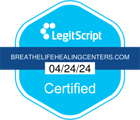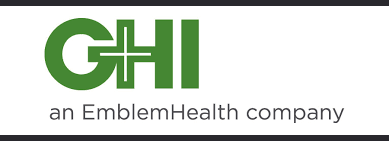Anxiety disorder is not just one simple little thing. There are actually over 17 unique anxiety disorders, each with their own characteristic set of symptoms, recognized by psychologists. Anxiety is the most common mental illness diagnosis. Considering that nearly 18% of the population of the United States has had or has some form of anxiety disorder, we should probably take the time to learn more about anxiety.
At the root of all anxiety disorders, are the feelings of fear and dread. Everyone at one time in life has felt these things, but that doesn’t mean we all have an anxiety disorder. To be properly diagnosed by a psychologist or medical doctor, your anxiety has to surpass the threshold of normal fears and worries of life (of which, there sure are plenty).
When it comes to mental and physical health care, it is important to be clear and consistent. We want our doctors and therapists to all be on the same page when it comes to diagnosis and treatment. This is why mental health professionals maintain an updated Diagnostic and Statistical Manual of Mental Health Disorders. This manual, a giant book is also known as the DSM, is currently in its fifth edition. In it, are the current standards for every single recognized mental health diagnosis. The DSM breaks down the umbrella term Anxiety Disorder into three smaller categories: Anxiety Disorders, Obsessive Compulsive Disorders, and Trauma and Stressor Disorders. Under each category are a few of the specific individual disorders. The categories function to group together the disorders with similar causes or expression. Let’s get into some more detail.
1. Anxiety Disorders
- Separation Anxiety Disorder | This disorder is most commonly seen in younger children, however, adults can experience this too. Separation anxiety disorder occurs when someone goes through intense fear and suffering whenever separated from a beloved caregiver, or his or her home. Perhaps you have seen this while still training your pet to live in your house?
- Selective Mutism | This occurs when someone who is physically capable of speaking cannot speak in certain situations. This behavior is a result of anxiety that pops up situationally. For example, a child who will not speak in school at all, tho speaks freely at home might have selective mutism. This disorder is seen in children more often than adults.
- Specific Phobia | This disorder involves an intense, debilitating fear of one or more specific things. Common phobias include fear of snakes, spiders, heights, small spaces, and dogs. These disorders may pertain to a traumatic event with the feared thing or may have come about with no obvious trigger. Specific phobias tend to respond very well to desensitization, which is a form of cognitive behavioral therapy.
- Social Phobia, also known as Social Anxiety | This form of anxiety disorder is characterized by intense fear and worry involving some or all social situations. People will avoid crowds and interactions, and become isolated over time. Social anxiety can severely impact someone’s quality of life and potential to work.
- Panic Disorder | This anxiety disorder is characterized by occasional bouts of extreme, terrifying bursts of anxiety known as panic attacks. These attacks can be so extreme that patients often believe that they are ‘really’ dying. Various triggers can set off a panic attack. Interestingly, the fear of a panic attack alone can trigger one to start. This is a vicious cycle that causes panic disorder to worsen over time without treatment.
- Agoraphobia | This disorder occurs when someone is intensely fearful and distressed by the thought of leaving home. That offected will stay inside at all costs, severing themselves from society.
- Generalized Anxiety Disorder, GAD | This is the most common of all anxiety diagnoses. With GAD, the individual affected will experience constant worry and fear with no consistent relief. Anything and everything triggers anxiety for those with GAD and can be very debilitating.
2. Obsessive Compulsive Disorders
- Obsessive Compulsive Disorder, OCD | This disorder is characterized by obsessions and compulsions. Obsessions are disturbing and repetitive unwanted thoughts, and compulsions are the repetitive behaviors used to soothe the obsessions. OCD can manifest in many different ways. One of the most common ways OCD is expressed is through an obsession with cleanliness and hand washing.
- Body Dysmorphic Disorder | This condition causes an individual to become obsessed with some perceived flaw in his or her appearance. They may spend hours fussing in front of the mirror and feel insecure in all other areas of life. Body dysmorphic disorder is associated with disordered eating as well.
- Hoarding Disorder | This type of anxiety occurs when someone is fearful and anxious about throwing anything away. Those affected tend to accumulate massive amounts of what looks like useless junk. Experts suggest that hoarding may be a disordered coping mechanism for a traumatic loss.
- Trichotillomania | This anxiety disorder is also known as hair pulling disorder. Not surprisingly, its characterized by an uncontrollable urge to pull and pick at hairs on the body. The disorder can lead to visible bald spots and permanent hair loss.
- Dermotillomania, also known as Excoriation Disorder | Like trichotillomania, this disorder involves obsessive picking and pulling. Those affected by dermotillomania are compelled to pick the skin rather than the hair. People can develop permanent scarring and damage and are at risk of developing dangerous infections.
3. Trauma and Stressor Disorders
- Reactive Attachment Disorder, RAD | RAD is a childhood mental illness that develops when an infant is never able to form a strong bond. This disorder, thankfully, is quite rare; most babies get a chance to form essential early bonds. RAD usually only develops in cases of abuse, severe neglect, and traumatic separation with a caregiver. Children with RAD do not socialize in appropriate ways. This disorder is considered to be a form of brain damage because of its developmental nature.
- Disinhibited Social Engagement Disorder | This type of anxiety disorder is another childhood mental illness. Like RAD, it occurs after a child has missed his or her chance to form a meaningful bond with a caregiver. Children with this condition are unable to form normal relationships and show an utter lack of social inhibition with others. Children will display intimacy and affection to strangers right off the bat, sometimes even walking away with them voluntarily.
- Post Traumatic Stress Disorder, PTSD | This disorder occurs after a very traumatic event. People affected by PTSD will experience disturbing thoughts, feelings, and dreams related to the event. They will also experience distress when reminded of the event, heightened levels of agitation, and changes in normal thought and behavior. We often see PTSD in war veterans, victims of violent crimes, and those who experienced severe accidents.
- Acute Stress Disorder | This disorder occurs after a traumatic event and involves many of the same characteristics as PTSD. However, unlike PTSD acute stress disorder is not a long-term diagnosis and should resolve fairly quickly. Unmanaged acute stress disorder can lead to PTSD in the future.
- Adjustment Disorder | This form of anxiety disorder results from a major life event that does not necessarily have to be traumatic. This disorder is often misdiagnosed as a bout of depression because it may appear like a temporary dip in mood. An adjustment disorder occurs because of the stress of life changes, causing a temporary increase in anxiety levels. This is often seen after big moves, breaks in relationships, and career changes.
Start Healing Through Our Anxiety Treatment Program
Anxiety disorders come with plenty of fear, dread, and loss of freedom in life. You do not have to suffer through these feelings forever, nor do you have to do it alone. At Breathe Life Healing Centers we have experts trained to help you cope with your anxiety disorder. Please reach out, we are here for you.














